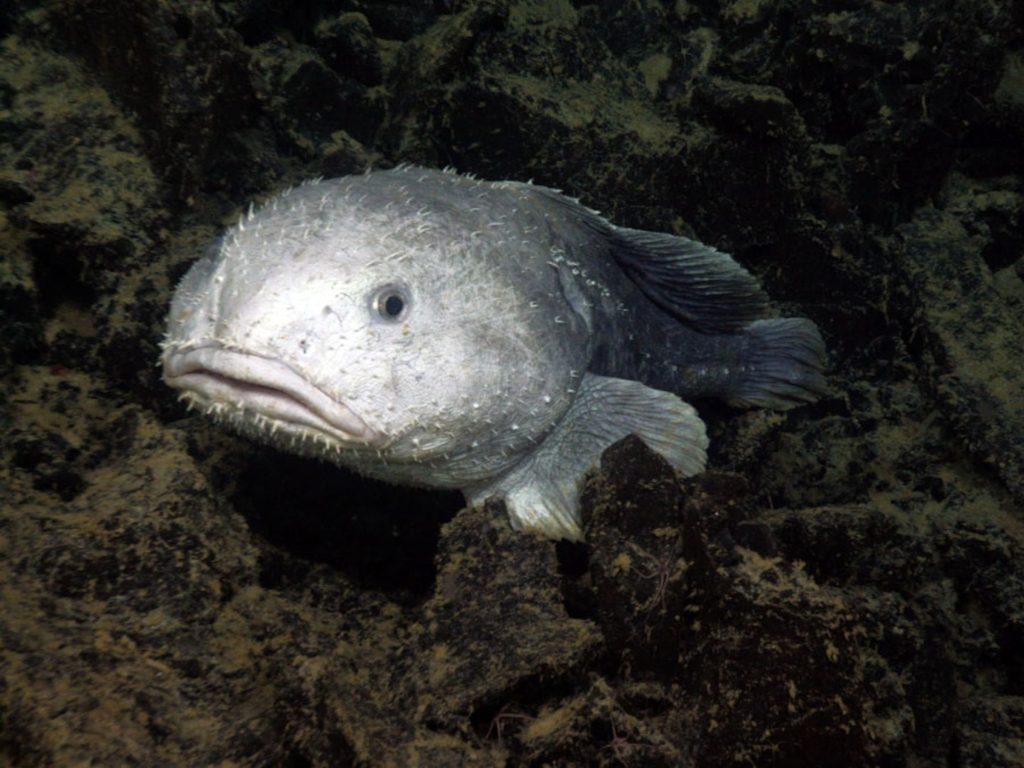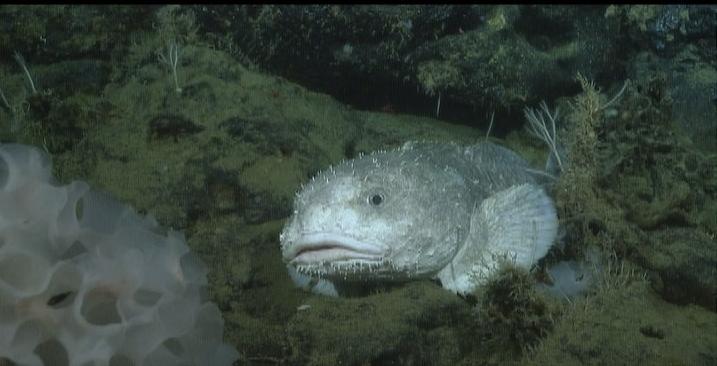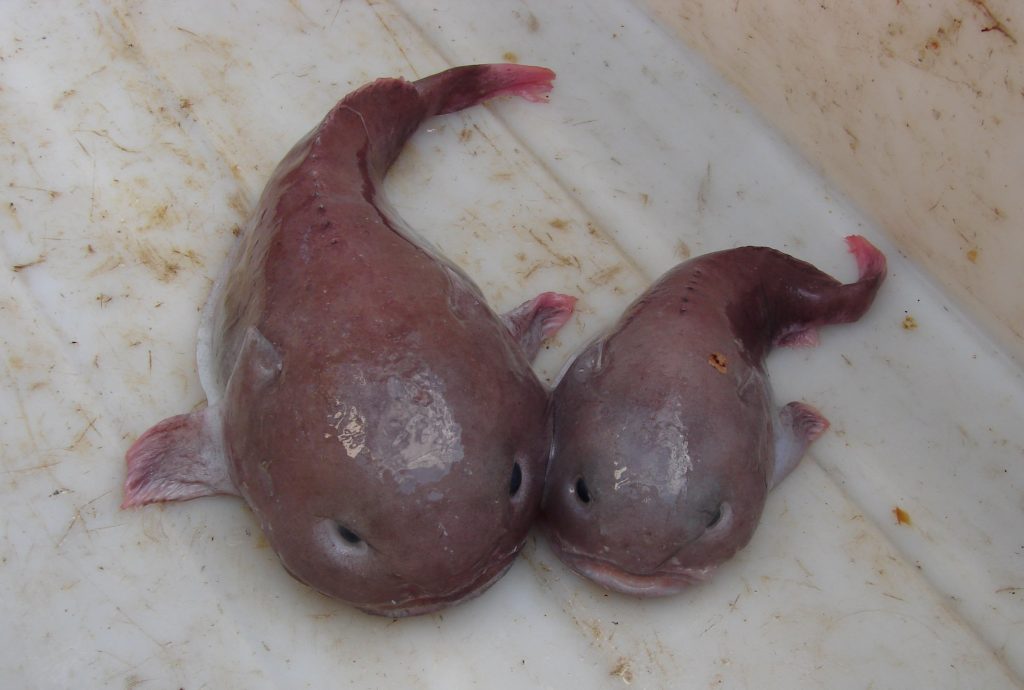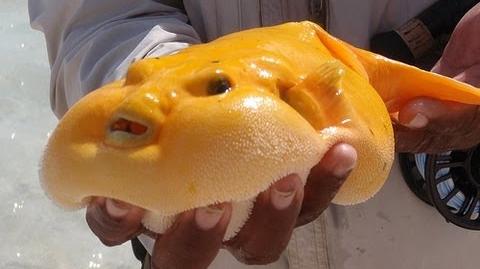Have you ever heard of the blobfish also known as “Psychrolutes Marcidus“? The blobfish is a unique species of fish that can be found underwater. This odd-looking creature has become somewhat of an internet sensation due to its unique appearance. The blobfish is even more fascinating because it lives in one of the harshest environments on Earth – the deep sea.
In fact, the pressure at the depths where the blobfish lives is around 120 times greater than at the surface. But what do blobfish look like underwater and under pressure? It’s a question that has intrigued scientists and curious minds alike.
As you dive deeper into the world of the blobfish, you’ll discover the surprising features and adaptations that allow it to thrive in such an extreme environment. The blobfish is truly a marvel of nature, from their gelatinous bodies to their lack of bones.
So, let’s explore what makes these creatures so unique and exotic!









Key Takeaways
- Blobfish have a gelatinous body and lack bones and muscles, allowing them to adapt to extreme pressure and float effortlessly.
- Blobfish use their fleshy lips to suck in small crustaceans and have a unique nose structure that becomes more normal looking out of the water.
- Blobfish are slow-moving and vulnerable to predators, but crucial to maintaining the balance of their deep ocean habitat.
- Blobfish reproduce by laying eggs in gelatinous masses that float above the seafloor and guard them until they hatch.
What Do Blobfish Look Like Underwater?

Caption: Blobfish Under Pressure
If you were to dive deep down into the ocean, you’d find that blobfish look like squishy, tadpole-like creatures with loose-fitting skin due to the pressure of the water. Despite their strange appearance, blobfish behave like any other fish, swimming around looking for food.
They have a diet that consists mainly of crabs, lobsters, and other crustaceans. The unique shape of their bodies allows them to conserve energy while they wait for prey to come within reach. Source
So don’t be fooled by their blob-like appearance, these fish are expert hunters in their underwater world.
Do Blobfish Have Muscles or Bones?
Blobfish may surprise you with their lack of muscles and bones, leaving you in awe of their unique anatomy. Instead of bones, they have a soft structure that allows them to adapt to the extreme pressure of the ocean depths. This physiological adaptation also allows them to maintain body shape and float effortlessly, conserving energy.
To make up for the lack of muscles, blobfish have a gelatinous appearance that is perfect for their sedentary lifestyle. They use their fleshy lips to suck in prey, mostly small crustaceans found on the ocean floor.
Blobfish anatomy is a fascinating example of how creatures can adapt to their environment unexpectedly.
What Do Blobfish Look Like Out of the Water?

So, you want to know if blobfish have normal noses? Well, let’s set the record straight.
Despite popular belief, blobfish do not have oversized noses. In fact, their eyes, mouth, and nose become more prominent when they are out of the water, giving them a distinct alien-like appearance.
Do Blobfish Have Normal Noses?
Seeing blobfish underwater reveals their true cuteness, as their big nose, which is actually an effect of pressure on their gelatinous body, becomes more normal looking.
Blobfish have a unique nose structure that protrudes from their face, but it’s not as big as it seems in photos. Without the pressure of water, their thick skin becomes thin and transparent, revealing a more typical nose shape.
This is due to sensory adaptation, where their body adjusts to changes in pressure and adapts accordingly.
So, if you want to see the real beauty of a blobfish, you have to dive underwater and witness their adorable appearance for yourself.
What Do Blobfish Babies Look Like Underwater?

When you look at baby blobfish underwater, you’ll notice that they have similar features to adult blobfish. Their big heads, bulbous jaws, and tapered tails help them move around effortlessly without using a lot of energy. They are able to float around in deep water with ease.
Just like adult blobfish, their unique body design allows them to thrive in their deep-sea habitats.
Baby Blobfish Above Water
Unfortunately, you can’t appreciate the adorable tadpole shape of a baby blobfish unless you see them in their natural deep water habitat. Above water, they look like a deflated blob, lacking the pressure necessary to maintain their unique form. (source)
Baby blobfish behavior is heavily influenced by their parents’ parenting techniques. These techniques involve protecting their young until they are old enough to fend for themselves. These parenting techniques are crucial to the survival of the species, as blobfish are slow-moving and vulnerable to predators.
Overall, it’s important to remember that while baby blobfish may not look as cute above water, they play a crucial role in maintaining the balance of their deep ocean habitat.
Blobfish Natural Habitat

You may have heard of the blobfish, a deep-sea creature with a distinctive appearance that has captured the attention of many. However, there is a bias against these fish due to their unusual appearance, leading some to fear or dismiss them as unimportant.
It’s important to understand the natural habitat of the blobfish and its role in the ecosystem, rather than simply judging it based on its looks.
Blobfish Bias: Deep Sea Fears
Don’t let your fear of the deep ocean prevent you from appreciating the unique beauty of blobfish and advocating for their conservation.
While it’s understandable to have fears of the unknown depths of the ocean, it’s important to remember that deep sea exploration has brought us incredible knowledge and understanding of the creatures that inhabit it.
With this knowledge, we can work towards marine conservation efforts that protect the habitats of these amazing creatures, including the blobfish.
By overcoming our subconscious fears and embracing the mystery of the deep sea, we can build a sense of belonging to a community that values and protects the incredible biodiversity of our planet’s oceans.
How Do Blobfish Survive a Harsh Habitat?

You may wonder how blobfish survive in their extreme underwater habitat.
To start with, blobfish can withstand the incredible pressure of deep-sea environments. They’re able to do this because their gelatinous bodies are less dense than water, helping them maintain their shape and avoid being crushed.
Additionally, blobfish reproduce by laying eggs in gelatinous masses that float above the seafloor. This allows their offspring to avoid predators and thrive.
How Do Blobfish Survive Extreme Water Pressure?

Have you ever wondered how blobfish manage to survive extreme water pressure without swim bladders? Well, blobfish have developed unique survival strategies and pressure adaptations to help them withstand the harsh conditions of their habitat.
Unlike other fish, blobfish don’t have swim bladders filled with air that would implode at great depths. Instead, their body is made up mostly of jelly-like flesh, which helps them withstand high pressure due to water having less density than air.
Blobfish also have a gelatinous consistency that allows them to float effortlessly in the water, reducing the energy they need. Their lack of muscle tissue also means they don’t produce much waste, so they require fewer resources to survive.
Overall, the blobfish has evolved into a fascinating creature that has remarkably adapted to its environment.
How Do Blobfish Reproduce?
If you’re curious about the blobfish’s incredible reproductive skills, you’ll be amazed to learn their unique mating habits.
Blobfish generate large clutches of eggs, laying between 100-1000 at once in nests that they guard closely. The reproductive cycle of the blobfish is fascinating as parents stay nearby to take care of the eggs until they hatch.
The blobfish’s incredible reproductive skills give them an advantage in their survival, allowing them to produce a large number of offspring at once. These habits contribute to the blobfish’s successful adaptation to their environment and ensure the continuation of their species.
Adaptations of a Blobfish
The blobfish has several adaptations that allow it to survive in its specialized habitat in the deep sea. Here are some of its key adaptations:
- Gelatinous Body: The blobfish has a gelatinous body structure consisting mainly of a gelatinous mass and a relative lack of muscle. This adaptation helps it withstand the high water pressure in the deep sea.
- Large Head: The blobfish has a large head that tapers back into a small flat tail. This feature helps it float along at the bottom of the sea with minimal effort, allowing it to conserve energy.
- Neutral Buoyancy: The gelatin-like skin and body of the blobfish allow it to maintain neutral buoyancy in the water. This adaptation helps it stay suspended in the ocean’s depths without spending much energy.
- Feeding Adaptations: Blobfish feed on a variety of organisms that are edible and available in their environment. They can consume carrion, crabs, sea urchins, and other small organisms that float before them.
It is important to note that blobfish adaptations are still being studied, and due to their deep-sea habitat, there is limited information available about their behaviour and other aspects of their lives.
Video of How Blobfish Look Like Underwater
Conclusion
Now that you know what blobfish look like underwater and under pressure, you may be wondering how they survive in such a harsh environment. Despite their gelatinous appearance, blobfish have adapted to their natural habitat in the deep sea.
They have a low metabolism, which allows them to conserve energy in the cold waters. They also have a special gel-like substance in their bodies that helps them maintain their shape under the extreme pressure of the deep sea.
The blobfish can be compared to a deep sea sponge, absorbing nutrients and energy from the surrounding environment. However, they are also apex predators, feeding on smaller fish and crustaceans that live in the same habitat.
The blobfish may not be the most conventionally attractive creature, but their unique adaptations make them fascinating to study. So next time you see a picture of a blobfish, remember that there’s more to them than just a funny-looking face.




There is definitely a lot to find out about this subject. I like all the points you made